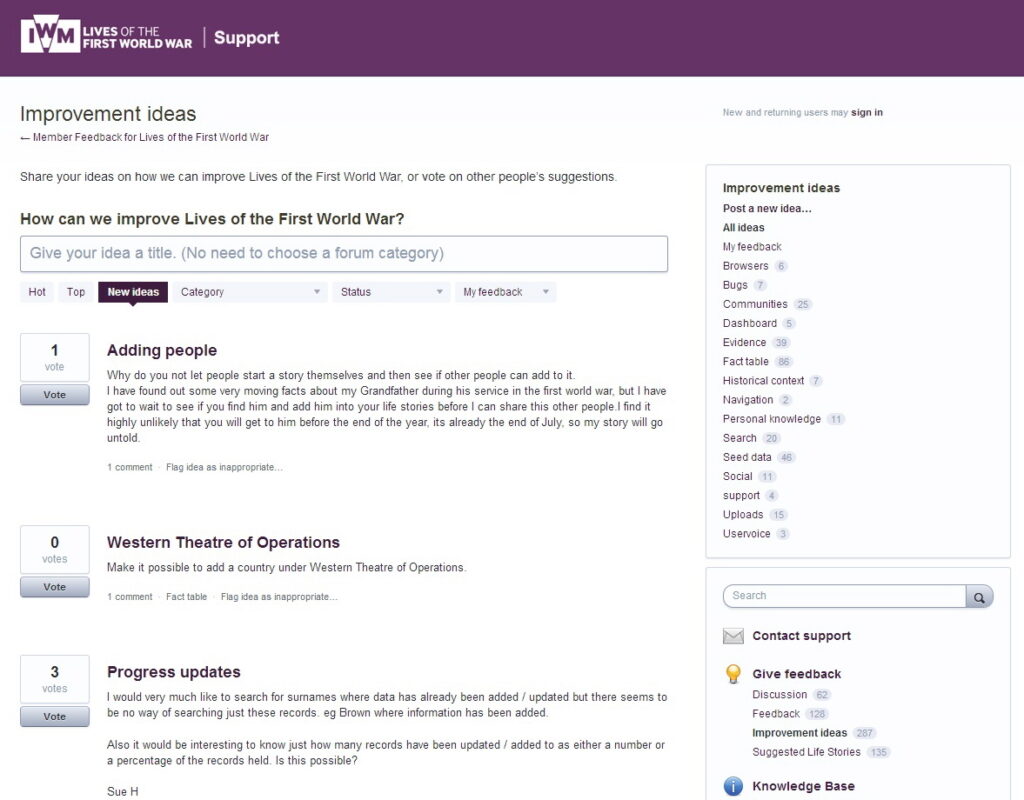Websites for crowdsourcing cultural heritage support participation and contribution quality by supporting community interaction.
Explanation: The project community is comprised of contributors and the project team, and may include users of project output. The primary purpose of enabling interaction is to inform, support, and gather queries and feedback from contributors. If community interaction is intentionally unsupported, the website should explain the reason for this.
Benefits: A visitor’s decision to contribute may be positively influenced by the prospect of belonging to a community, and the knowledge that support will be provided. Interactions that support contributors with questions or concerns better enables them to submit quality contributions. Contributors can provide feedback to the project team, which may help to improve the user experience, and in turn incentivize them to return and contribute more.
The ability to interact with the project community may be more influential on the decision to contribute for visitors unfamiliar with websites for CCH than for people who have visited or contributed to such websites before.
Examples of compliance with this principle:
- Displaying a project email address
- Enabling users to subscribe to project newsletters
- Integrating social networks, blogs and discussion forums
- Comment functionality
- Feedback forms
- Enabling users to send private messages between them, join user groups, and add other users as friends.

